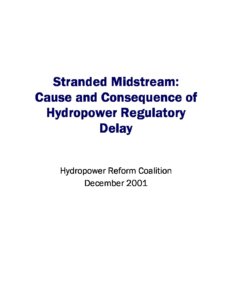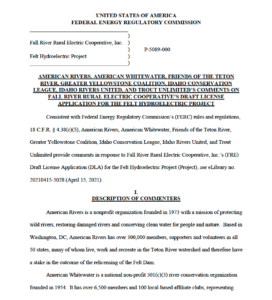Haw River Among America’s Most Endangered Rivers® of 2014
(Washington, DC) – American Rivers named the Haw River among AMERICA’S MOST ENDANGERED RIVERS® of 2014 today, shining a national spotlight on the threat polluted runoff poses to drinking water supplies and recreation.
“The America’s Most Endangered Rivers report is a call to action to save rivers that are at a critical tipping point,” said Peter Raabe of American Rivers. “Pollution is choking the Haw River and without a meaningful cleanup plan that addresses the sources of pollution, the drinking water supplies for one million people will continue to be at risk.”
The Haw River is threatened by polluted runoff– rainwater that picks up pollution as it flows over roads and parking lots – and sewage leaking from outdated and overtaxed wastewater pipes. This pollution, containing excess nitrogen and phosphorous, has caused large algal blooms in Jordan Lake, a major drinking water reservoir, which impacts the health of people and fish. The cleanup plan for the river has been delayed and weakened over the last three years. Now, instead of addressing the causes of the pollution, some municipalities and developers want to install 36 huge “mixers” into the Jordan Lake Reservoir in an attempt to reduce algae.
American Rivers and its partners called on the North Carolina General Assembly to stop the delay and clean up the Haw River by implementing the original 2009 Jordan Lake Reservoir Nutrient Management Strategy, commonly called the ‘Jordan Lake Rules’.
“The clock started ticking on the state and federal mandate to clean up the pollution in the river and Jordan Lake back in 2002, when it made the federal ‘Impaired Waters List’,” said Elaine Chiosso, the Haw Riverkeeper for Haw River Assembly. “It took seven more years to draft and pass these rules in 2009, and since then the state’s legislature has been delaying and weakening them. Clean water is essential to our lives and communities. It’s time to implement the full rules, now.”
“There’s no lack of science or planning on how to clean up the Haw River,” said Cassie Gavin, Director of Government Relations for the NC Sierra Club. “We have the solution; what we are lacking is the leadership and political will to move forward.”
“We live in one of the fastest growing metro regions in the nation,” said Karen Rindge, Executive Director of WakeUp Wake County. “We must put protections in place to ensure clean drinking water for future generations. Pollution in the Haw is hurting our drinking water.”
The Haw River flows 110 miles from its headwaters in the north-central Piedmont region of North Carolina to the Cape Fear River just below Jordan Lake Reservoir. The river and its watershed provide drinking water to nearly one million people living in and around the cities of Greensboro, Burlington, Chapel Hill, Cary, and Durham. The river is home to abundant wildlife and offers excellent outdoor recreational opportunities. The Haw River is the most popular whitewater paddling river in the North Carolina Piedmont Region, and Jordan Lake (a 14,000-acre reservoir) provides recreation for roughly one million visitors a year for boating, swimming, camping, and fishing.
The annual America’s Most Endangered Rivers® report is a list of rivers at a crossroads, where key decisions in the coming months will determine the rivers’ fates. Over the years, the report has helped spur many successes including the removal of outdated dams, the protection of rivers with Wild and Scenic designations, and the prevention of harmful development and pollution.
America’s Most Endangered Rivers® of 2014:
#1 San Joaquin River
California
Threat: Outdated water management and excessive diversions
At Risk: River health and resilient communities
#2 Upper Colorado River System
Colorado
Threat: New trans-mountain water diversions
At Risk: River health and recreation
#3 Middle Mississippi River
Missouri, Illinois, Kentucky
Threat: Outdated flood management
At Risk: Wildlife habitat and public safety
#4 Gila River
New Mexico
Threat: New water diversions
At Risk: River health, fish & wildlife, recreation, and tourism
#5 San Francisquito Creek
California
Threat: Dam
At Risk: Fish and wildlife habitat and public safety
#6 South Fork Edisto River
South Carolina
Threat: Excessive water withdrawals
At Risk: Fish and wildlife habitat, recreation, and water quality
#7 White River (CO)
Colorado
Threat: Oil and gas drilling
At Risk: Drinking water supplies and fish and wildlife habitat
#8 White River (WA)
Washington
Threat: Outdated dam and fish passage facilities
At Risk: Salmon, steelhead, and bull trout populations
#9 Haw River
North Carolina
Threat: Polluted runoff
At Risk: Clean water
#10 Clearwater/Lochsa Rivers
Idaho
Threat: Industrialization of a Wild and Scenic River corridor
At risk: Scenery, solitude, world-class recreational values
This post originally appeared at American Rivers.


